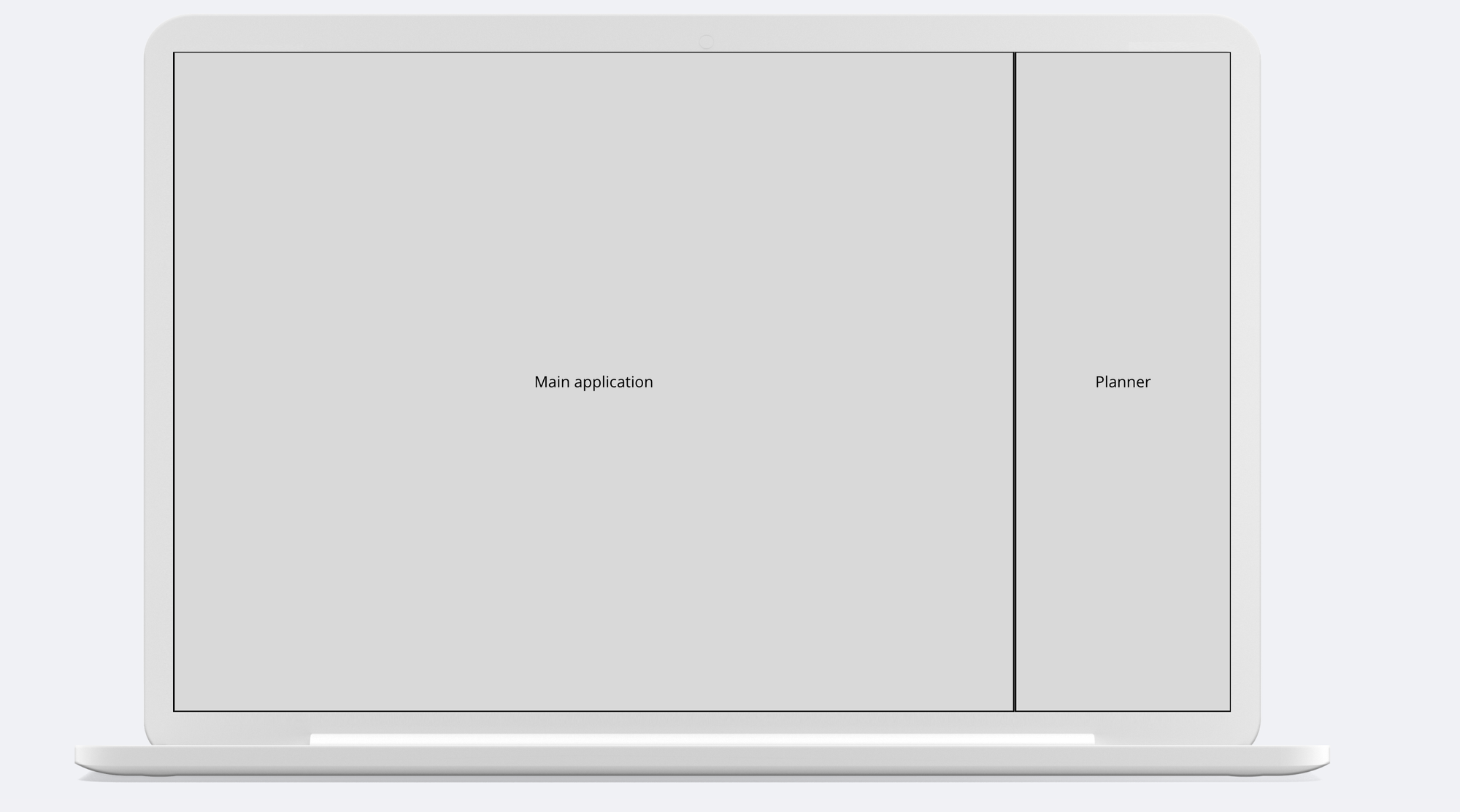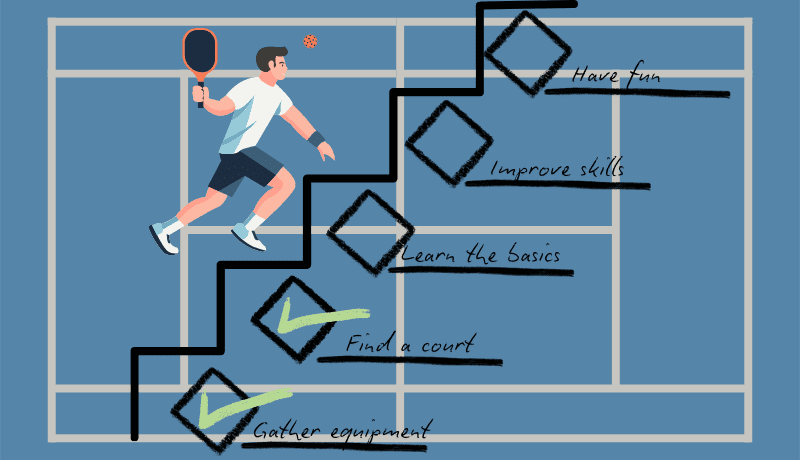Advanced Daily Plan: Enhancing Time Blocking with a List
This point is often overlooked, but it’s clear that not every task can fit into predefined time slots. So, what should you do? Find out in this post.

A Bit About My Experience
The topic of time management is very close to me. In fact, my interest in lists as a tool was born out of attempts to establish my personal productivity system. When individual tasks seemed insufficiently effective, I began thinking about task groups and their lists.
When talking about a personal productivity system, I don’t mean some methodology for distribution. At some point every productivity practitioner faces the limits of the learned approaches. The next logical task is to stop trying to find on best planning approach or one best planning tool for personal tasks. And then to start gathering what works for you. The time management skills suitable to build your work-life balance.
In my case, after reaching the limitations of single tasks, I was looking for something more. The first step was to seek information about checklists. They seemed to be the next level. Overall, this was the right direction. I came across “The Checklist Manifesto” book [1] and eagerly began reading, expecting to learn how to create checklists and integrate them into my to-do list.
The book was captivating, but it didn’t teach how to make checklists. It lacked instructional content, being more of an ode to this remarkable textual tool. By the way, if you are interested in practical information on creating checklists, this blog features a relevant post.
Since then, I have revised my planning method several times. It’s essential not only to plan your day, but also to implement it. As was once quoted in another blog post [2]:
No plan survives first contact with the enemy.
For managing my personal projects, I use the Todoist app. It’s a famous online planner. I’ve been using it for almost 10 years and have marked 61,500 tasks as completed. I’d like to think I’ve learned something by now.
Challenges in Time Management Skills
Time management isn’t without its flaws. One of the widely recommended approaches is time blocking, but it has a significant drawback. Let’s first consider the following schedule as an example:
08:00 ╔═════════════════════════════════╗
║ Create a proposal for a client ║
║ ║
║ ║
║ ║
║ ║
11:00 ╟─────────────────────────────────╢
║ Check email and messages ║
║ ║
12:00 ╟─────────────────────────────────╢
║ Review social media ║
12:30 ╟─────────────────────────────────╢
║ Lunch ║
║ ║
13:30 ╟─────────────────────────────────╢
║ Attend meetings ║
║ ║
16:00 ╟─────────────────────────────────╢
║ Check email and messages ║
16:30 ╟─────────────────────────────────╢
║ Prepare for the next day ║
17:00 ╚═════════════════════════════════╝In this schedule, different daily tasks of the day are assigned specific times. The assumption seems to be that the person will frown and complete one task after another as scheduled. After all, there is a plan!
Are there problems with this approach? Here are some potential issues:
- Create a proposal for a client.
- Check email and messages.
What are the risks? The main risk lies in the unpredictable volume of work. For example, what if there are 100 new emails due to a system crash, causing panicked users to flood the inbox? Handling admin tasks in such a scenario could take much longer than the allocated hour, delaying other tasks and disrupting priorities.
Much riskier is the task of creating a proposal for a client. It might encounter unexpected challenges if the proposal is not among your routine professional tasks. This unpredictability can lead to frustration.
Why does this happen? Time management often assumes an unrealistic premise:
It is believed that people can accurately predict the duration of atypical tasks.
Embracing Unpredictability
What offspring does this unrealistic premise produce? I suspect that the “Do or die” attitude is its child. Such offspring should be avoided. Instead, let’s adopt a different premise:
Some tasks in life cannot have their duration accurately estimated in advance.
Wonderful, we’ve just shifted our mindset. But how should we approach the specific tasks now? For a long time, I didn’t have a good answer to this question, but I believe I’ve recently found one. It emerged when my productivity system, refined over a decade, began to falter.
Tasks Overload Leads to Better Planning
Regular readers know that I publish blog posts twice a week. Yes, I have tasks for writing them. Of course, there are goals and tasks related to my primary work, as that’s where most of my activities take place. Moreover, I need to migrate a domain from one hosting service to another, take care of my cats, and prepare and launch a poll in my Telegram channel. The motto to stay focused here is already not enough.
How long will it take to write a new post? If only I knew! Yet, deadlines exist. Having established a publishing pace, I don’t want to lose it.
Let’s imagine today is a blog post release day. There are still a few hours left, right? Surely, I can spend half an hour engaging with people on Threads on behalf of the blog. Oh, wait, I completely forgot about the domain migration! And when was I planning to conduct the poll? 😨
At some point, I realized that if the goal of my productivity system is to keep things in order, it’s not doing an outstanding job. Planning your day is crucial for managing time effectively and reducing stress. While my system handled routine tasks well and manages medium-term goals requiring repetition, it falled short for short-term but uncertain goals. So it was not handling stress well.
When I only had one or two such goals, I could manage them mentally and deal with them somehow. However, as the number of these tasks grew, I needed a more structured approach.
What helped me regain control was adding a list and using an information radiator.
Separating Routine and Short-Term Tasks
It’s convenient to think that daily planner can include two specific types of tasks: rigid tasks and flexible tasks.
Rigid Tasks are tasks that need to be completed at a specific time. Most commonly, these are meetings, though I also have other rigid tasks of this kind. I deal with over 15 such tasks daily.
Flexible Tasks are not tied to a specific time and can be done whenever. This group includes unpredictable short-term tasks.
For flexible tasks, it’s convenient to use a simple prioritized to-do list. That’s essentially what I’ve adopted. There are several prioritization techniques, such as the Eisenhower Matrix or the ABCDE method.
In my practice, I haven’t yet felt the need for prioritization techniques. For some reason, it’s almost always clear to me what to tackle next. Maybe I can naturally prioritize tasks.
Let’s say we want to plan a day effectively. What does this leave us with? An hourly grid for rigid tasks and a prioritized list for flexible tasks. Here’s an example plan:
Rigid Plans
09:00 ╔═════════════════════════════════╗
║ Plan the day ║
09:30 ╟─────────────────────────────────╢
║ Review the task board ║
10:00 ╟─────────────────────────────────╢
║░░░░░░░░░░░░░░░░░░░░░░░░░░░░░░░░░║
║░░░░░░░░░░░░░░░░░░░░░░░░░░░░░░░░░║
║░░░░░░░░░░░░░░░░░░░░░░░░░░░░░░░░░║
11:30 ╟─────────────────────────────────╢
║ Lunch ║
║ ║
12:30 ╟─────────────────────────────────╢
║░░░░░░░░░░░░░░░░░░░░░░░░░░░░░░░░░║
║░░░░░░░░░░░░░░░░░░░░░░░░░░░░░░░░░║
║░░░░░░░░░░░░░░░░░░░░░░░░░░░░░░░░░║
14:00 ╟─────────────────────────────────╢
║ Participate in a meeting ║
14:30 ╟─────────────────────────────────╢
║░░░░░░░░░░░░░░░░░░░░░░░░░░░░░░░░░║
║░░░░░░░░░░░░░░░░░░░░░░░░░░░░░░░░░║
║░░░░░░░░░░░░░░░░░░░░░░░░░░░░░░░░░║
║░░░░░░░░░░░░░░░░░░░░░░░░░░░░░░░░░║
║░░░░░░░░░░░░░░░░░░░░░░░░░░░░░░░░░║
17:00 ╟─────────────────────────────────╢
║ Discuss project status ║
║ ║
18:00 ╚═════════════════════════════════╝
Flexible Short-Term Task List
☐ Prepare a blog article
☐ Migrate the domain
☐ Launch a Telegram pollWe see these peculiar time slots in the schedule:
║░░░░░░░░░░░░░░░░░░░░░░░░░░░░░░░░░║These represent specific time blocks allocated for working on unpredictable short-term tasks. As soon as a rigid task is completed, I begin working on the highest-priority flexible task.
Time Isn’t Infinite. What Should You Do? Daily Planning Tips
It’s clear that not all tasks can be completed within the “slots for managing the unpredictable.” It’s entirely possible to create an unmanageable to-do list that no system can handle.
Thus, the first step is to avoid creating unmanageable to-do lists. The Ivy Lee Method [3] even suggests limiting your list to six tasks. I’m not a big fan of arbitrary numbers, so I don’t strictly follow that rule.
A great feature of many flexible tasks is that they can be rescheduled without significant consequences. If a large task cannot be completed and other tasks take precedence, I postpone it to the next day. This can even be applied to some rigid tasks.
In some ways, this reminds me of ballast on a hot-air balloon. As long as it’s useful, it stays. But when the balloon faces difficulties, the ballast gets jettisoned.
If a task for you is deadweight that cannot be detached, you have my sympathy. Many of us were there.
Setting Up an Information Radiator
We’ve seen the list. Thanks to it, I no longer worry that an important short-term goal will be forgotten. But how can we make it even more effective? How do we ensure it helps you refocus after an unexpected distraction? This is where the properties of an information radiator come in.
An information radiator is something that “radiates” the necessary information — something constantly visible that reminds you of what’s important. Sometimes It even helps team members track progress on tasks effectively, enhancing collaboration and performance discussions. For example, project goals. In some places, company principles serve this role. Although they may fade into the background over time, the constantly changing components of a flexible task list make it less likely to become stale.
I work at a computer, which allows me to place applications with critical information directly on my screen. Most of my work happens in a browser, and I position my task tracker on the right side of the screen, just as shown below.

Positioning Rigid and Flexible Tasks for Better Visibility
It’s not enough to simply place an electronic organizer to the side of the main application. The task sets within the organizer must also be organized effectively. Here’s how mine is structured:
╔═════════════════════════════════╗
║ ☐ Prepare a blog article ║
║ ☐ Migrate the domain ║
║ ☐ Launch a Telegram poll ║
09:00 ╠═════════════════════════════════╣
║ Plan the day ║
09:30 ╟─────────────────────────────────╢
║ Review the task board ║
10:00 ╟─────────────────────────────────╢
║░░░░░░░░░░░░░░░░░░░░░░░░░░░░░░░░░║
──────────current time 10:21───────────────
║░░░░░░░░░░░░░░░░░░░░░░░░░░░░░░░░░║
║░░░░░░░░░░░░░░░░░░░░░░░░░░░░░░░░░║
11:30 ╟─────────────────────────────────╢
║ Lunch ║
║ ║
12:30 ╟─────────────────────────────────╢
║░░░░░░░░░░░░░░░░░░░░░░░░░░░░░░░░░║
║░░░░░░░░░░░░░░░░░░░░░░░░░░░░░░░░░║
║░░░░░░░░░░░░░░░░░░░░░░░░░░░░░░░░░║
14:00 ╟─────────────────────────────────╢
║ Participate in a meeting ║
14:30 ╟─────────────────────────────────╢
║░░░░░░░░░░░░░░░░░░░░░░░░░░░░░░░░░║
║░░░░░░░░░░░░░░░░░░░░░░░░░░░░░░░░░║
║░░░░░░░░░░░░░░░░░░░░░░░░░░░░░░░░░║
║░░░░░░░░░░░░░░░░░░░░░░░░░░░░░░░░░║
║░░░░░░░░░░░░░░░░░░░░░░░░░░░░░░░░░║
17:00 ╟─────────────────────────────────╢
║ Discuss project status ║
║ ║
18:00 ╚═════════════════════════════════╝The flexible, unpredictable tasks are at the top, while the hourly rigid tasks are below.
A special line marks the current time — “current time 10:21.” This indicates the slot allocated for working on flexible tasks, meaning I should currently be focusing on preparing the blog article, which is exactly what I’m doing.
The Method in Brief
We’ve covered a lot about how this method developed and its details. Let’s summarize it for easy reference:
- Divide your tasks into rigid routine tasks and flexible unpredictable tasks.
- Allocate rigid tasks within an hourly daily schedule.
- Create time slots for working on flexible tasks.
- Develop a prioritized list of flexible tasks.
- Arrange the task list and hourly schedule for constant visibility.
- Perform rigid tasks within their allocated time.
- During flexible task time slots, work on the most important task.
- Reassess priorities in the flexible task list as needed.
Thank you for reading! I hope the technique described above helps you create a useful plan for your day that accommodates the unpredictability of some tasks.
Was it helpful to learn how a small list can eliminate significant procrastination? Subscribe to the “So List” blog and don’t miss other tips about these humble yet powerful tools. Think you already know them? Doubtful — they hide too many secrets.
List of Links
[1] Atul Gawande, “The Checklist Manifesto: How to Get Things Right”, ISBN 978-0312430009
[2] “No Plan Survives First Contact With the Enemy” from Quote Investigator website
[3] “The Ivy Lee Method: The Daily Routine for Peak Productivity” on “James Clear” website



